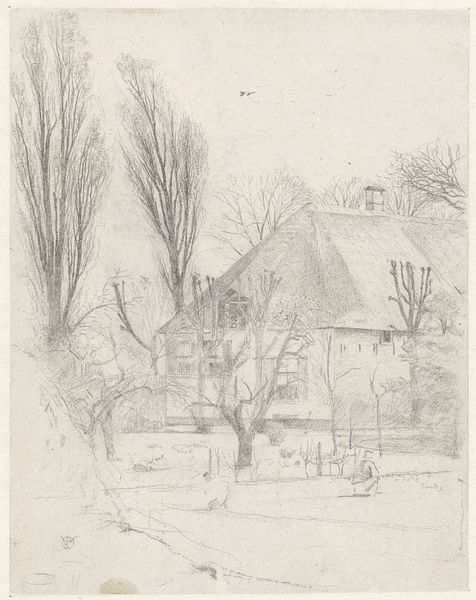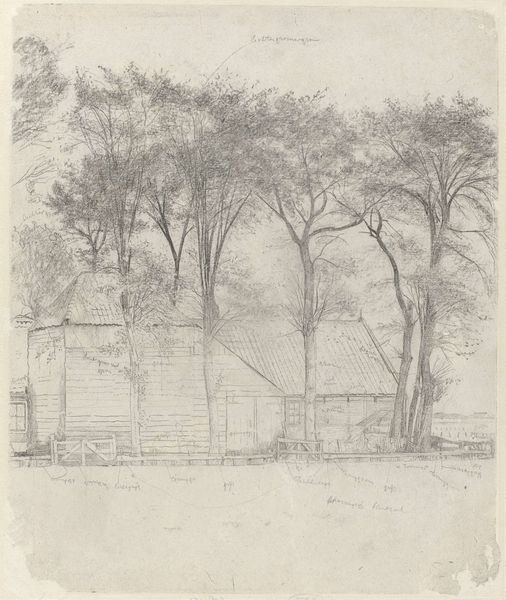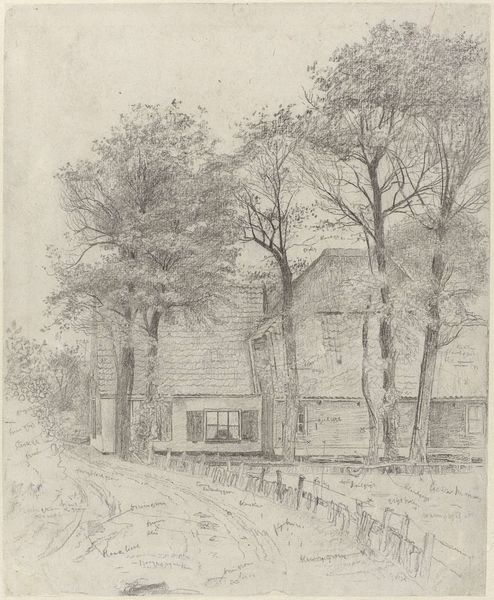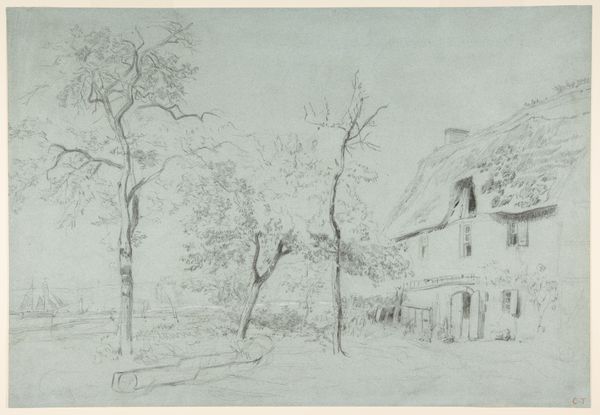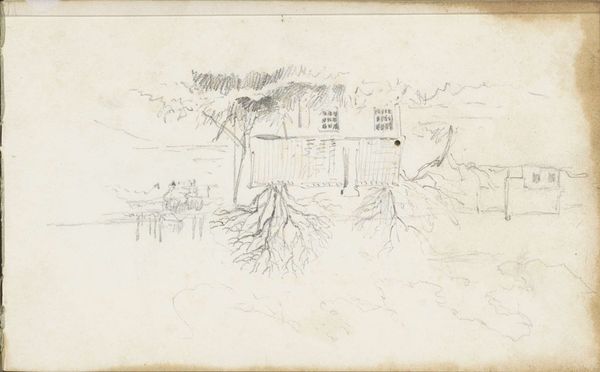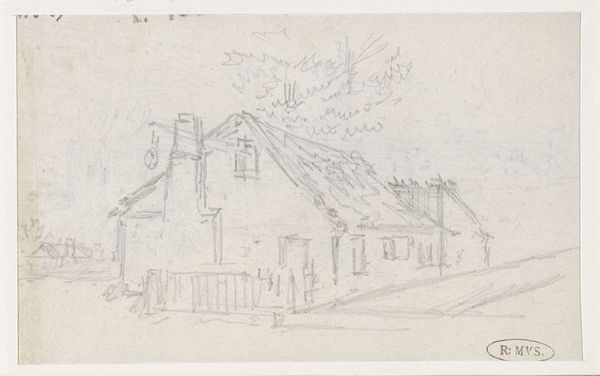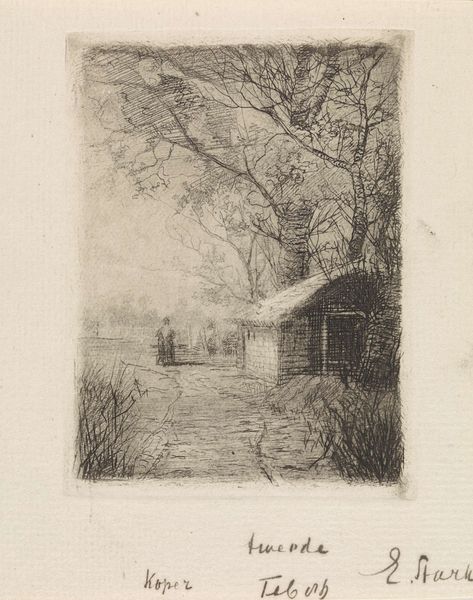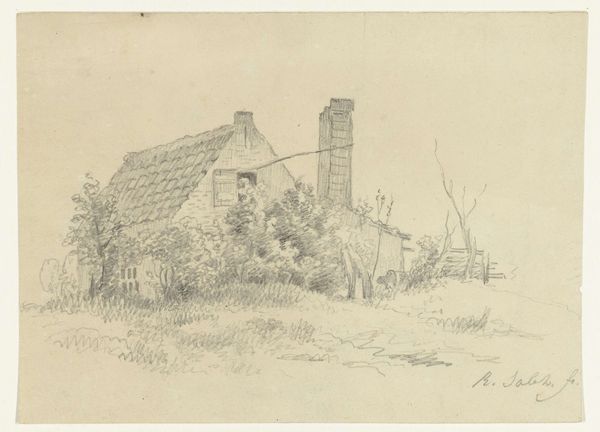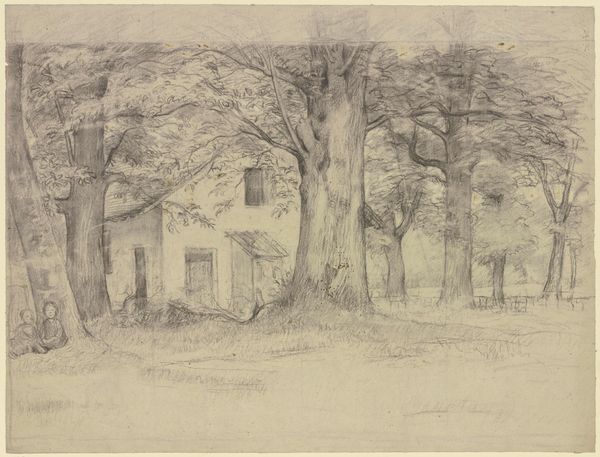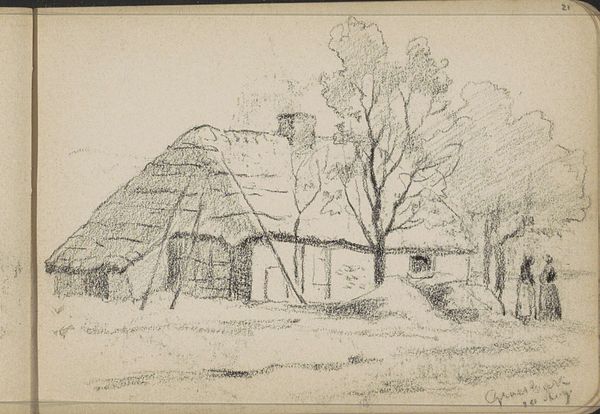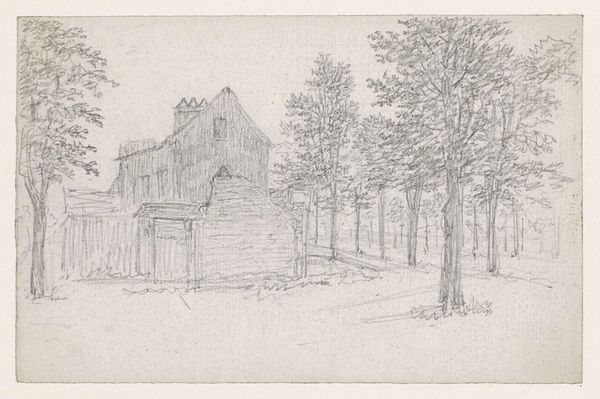
drawing, pencil
#
drawing
#
dutch-golden-age
#
pencil sketch
#
landscape
#
pencil
#
realism
Dimensions: height 263 mm, width 208 mm
Copyright: Rijks Museum: Open Domain
Editor: We’re looking at Gerrit Willem Dijsselhof’s "Boerderij bij Velzen", a pencil drawing created sometime between 1876 and 1924. There's a delicate, almost ghostly quality to it, and I'm immediately drawn to the bare trees framing what looks like a farmhouse. What captures your attention when you look at this piece? Curator: It's the stillness, isn't it? Like a whisper from a time long past. I find myself drawn to the starkness of the branches against what feels like a soft, grey sky. Dijsselhof wasn't just capturing a farmhouse; he was, in a way, capturing a mood. Do you notice how the almost casual strokes of the pencil still convey depth and volume? He wasn't afraid to leave some areas vague, trusting the viewer to fill in the blanks. Editor: I do. It almost feels unfinished, but intentionally so. Like a half-remembered dream. Do you think the sparseness adds to the sense of realism, in a way? Curator: Absolutely! The sketch’s unfinished appearance enhances realism by capturing fleeting impressions and the inherent impermanence of life and memory. This method encourages viewers to project themselves into the scene, contributing to its story, almost making it alive again, which would be lost with photorealistic depiction. There's a conversation happening between the artist and the viewer. We’re not just observing; we’re co-creating. Editor: That’s fascinating! I hadn’t thought of it that way. It’s like he’s inviting us to complete the memory. I definitely see this differently now. Curator: Precisely. Art is often about the unspoken dialogue, wouldn't you agree? It’s a gentle nudge towards introspection, inviting us to reflect on our perceptions and find echoes of our own stories within its delicate lines. It almost doesn't get better than that.
Comments
No comments
Be the first to comment and join the conversation on the ultimate creative platform.
